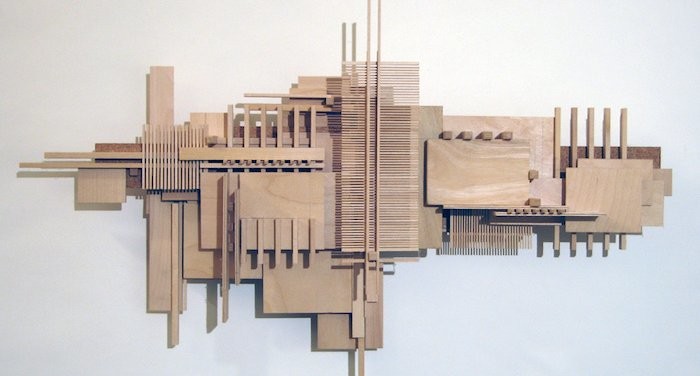
The Week in Summary: What Is BIM?, Prefab Buildings & AU 2016
Talk about an exciting week! Autodesk University (AU) 2016 in Las Vegas was full of learning, connecting, and experimenting with fun new toys. We made it to Friday, but there's a good chance we'll be sleeping all weekend... In the meantime, here's a look at some of what we experienced, as well as some interesting tidbits from around the world of architecture, engineering, and construction (AEC).
Building information modeling (BIM) is, naturally, something that is near and dear to our hearts, but many still ask, "What is it?" Frustratingly, there is no simple answer, but the folks at Arup have attempted to simplify it in a recent post about how digital collaboration is redefining design. They discuss the ways that virtual prototypes not only aid in better construction, but continue to be useful even after a project is completed: "BIM achieves all this because it is not simply a 3D animation: it is an intelligent project model in which information is embedded so it can be shared between stakeholders throughout the whole process." BIM does not begin with design and end with construction; rather, it serves for the lifetime of the building or even the city for which it was employed.
No one ever said BIM doesn't look cool. (Source: Arup)
One of the biggest complaints in the virtual reality (VR) world is that, regardless of the quality of hardware and software, a user is quite literally tethered to a machine, limiting true-to-life movement. Researchers at MIT are on a quest to break those chains, developing a wireless technology that could transfer the necessary data without the cords. In AEC, VR is mostly used off-site, where cables are less of an issue, but the technology has further-reaching implications: "Millimeter wave transmission... promises high-gigabyte wireless data transfer, which could be applied to a wide range of construction sensors, wearables and job site equipment telematics systems." MIT's work, then, could lead to a truly connected jobsite, seamlessly tracking everything from labor to materials to equipment.
VR's applications could rapidly expand with MIT's research. (Source: Construction Dive)
We've heard of prefab houses, but prefab buildings? It looks like that could be the wave of the future. A 32-story tower just opened in Brooklyn, built entirely of prefabricated modular units. The building offers studio, one-bedroom, and two-bedroom units, both at market value and at a reduced cost for lower-income renters. "By focusing most of a project's construction and installation processes in a factory setting, its completion timeline can be reduced by up to 70% and labor costs can be lowered considerably." Those lowered construction costs mean savings can be passed on to owners, creating a viable, affordable option for cities hit by a shortage of affordable housing.
This 32-story, 363-unit building is entirely composed of modular units. (Source: Construction Dive)
Finally, we'll post next week about our thoughts from Autodesk University 2016. We continue to be very excited about our work at BuildingSP and AU confirmed that we're at the forefront of several technological trends in AEC that bring significant value to our clients. Jeff Kowalski's keynote on artificial intelligence, machine learning, generative design, and the future of how we work is a near perfect description of the work at BuildingSP. GenMEP uses heuristic algorithms, which is a subset of artificial intelligence. The abstraction of "clicks" into parameters is a stage set for machine learning. GenMEP's integration into Dynamo is already demonstrating generative design methods. And our users around the globe see how our product improves their workflows today and will revolutionize their deliverables in the near future. AU was further proof that our work is highly relevant and we look forward to working on the diverse projects that engage our clients.
Sadly no Storm Troopers this year, but read our AU 2016 review next week to hear about all the exciting happenings. (Source: Adobe)
As you may have noticed, we've been doing a lot of writing about the impact of computational BIM, generative design, and the future of how we work. One thing we haven't done is turn some of this thinking into more rigorous analysis. But now we're ready to do that!
If you work for a general contractor, subcontractor, or design firm and want to collaborate on whitepapers that quantify how computational methods of working will change our industry, reach out to us and let's talk about what we can do. We're open to collaborations worldwide and have lots of ways of measuring performance indicators to gain insight into change in our industry. Contact Brett Young at brett@buildingsp.com.



